- Home
- Daniel Defoe
A Journal of the Plague Year
A Journal of the Plague Year Read online
Great Clarendon Street, Oxford OX2 6DP
Oxford University Press is a department of the University of Oxford. It furthers the University’s objective of excellence in research, scholarship, and education by publishing worldwide in
Oxford New York
Auckland Cape Town Dar es Salaam Hong Kong Karachi
Kuala Lumpur Madrid Melbourne Mexico City Nairobi
New Delhi Shanghai Taipei Toronto
With Offices in
Argentina Austria Brazil Chile Czech Republic France Greece
Guatemala Hungary Italy Japan Poland Portugal Singapore
South Korea Switzerland Thailand Turkey Ukraine Vietnam
Oxford is a registered trade mark of Oxford University Press
in the UK and in certain other countries
Published in the United States
by Oxford University Press Inc., New York
Note on the Text, Explanatory Notes © Oxford University Press 1969, 2010
Introduction, Select Bibliography, Medical Notes,
Topographical Index © David Roberts 2010
Chronology © Thomas Keymer and James Kelly 2007
First published as a World’s Classics paperback 1990
Reissued 1998, 2009
Revised edition 2010
The moral rights of the authors have been asserted
Database right Oxford University Press (maker)
All rights reserved. No part of this publication may be reproduced, stored in a retrieval system, or transmitted, in any form or by any means, without the prior permission in writing of Oxford University Press, or as expressly permitted by law, or under terms agreed with the appropriate reprographics rights organization. Enquiries concerning reproduction outside the scope of the above should be sent to the Rights Department, Oxford University Press, at the address above
You must not circulate this book in any other binding or cover
and you must impose the same condition on any acquirer
British Library Cataloguing in Publication Data
Data available
Library of Congress Cataloging-in-Publication Data
Data available
Typeset by Glyph International Ltd., Bangalore, India
Printed in Great Britain by
Clays Ltd., St Ives plc
ISBN 978-0-19-957283-0
1 3 5 7 9 10 8 6 4 2
OXFORD WORLD’S CLASSICS
For over 100 years Oxford World’s Classics have brought readers closer to the world’s great literature. Now with over 700 titles—from the 4,000-year-old myths of Mesopotamia to the twentieth century’s greatest novels—the series makes available lesser-known as well as celebrated writing.
The pocket-sized hardbacks of the early years contained introductions by Virginia Woolf, T. S. Eliot, Graham Greene, and other literary figures which enriched the experience of reading. Today the series is recognized for its fine scholarship and reliability in texts that span world literature, drama and poetry, religion, philosophy, and politics. Each edition includes perceptive commentary and essential background information to meet the changing needs of readers.
Refer to the Table of Contents to navigate through the material in this Oxford World’s Classics ebook. Use the asterisks (*) throughout the text to access the hyperlinked Explanatory Notes.
OXFORD WORLD’S CLASSICS
DANIEL DEFOE
A Journal of the Plague Year
Edited with Notes by
LOUIS LANDA
With an Introduction by
DAVID ROBERTS
OXFORD WORLD’S CLASSICS
A JOURNAL OF THE PLAGUE YEAR
DANIEL DEFOE (1660–1731) was born in London, the third child of James Foe, a tallow chandler, and his wife Alice. He attended Charles Morton’s dissenting academy in Newington Green before establishing himself as a hosier and general merchant in Cornhill, and married Mary Tuffley in 1684. A year later he joined the Duke of Monmouth’s disastrous rebellion against James II, and was lucky to escape the ‘Bloody Assizes’ following Monmouth’s defeat at Sedgemoor. Persistent overinvestment precipitated his bankruptcy in 1692, after which he turned to writing.
Defoe’s first great success came with his satirical poem The True-Born Englishman (1701). The Shortest Way with the Dissenters (1702), an audacious parody of High Anglican extremism, brought him a charge of seditious libel and he was briefly imprisoned. Defoe was employed by successive ministries as a polemicist until about 1717, and continued to write prolifically thereafter in a range of fields including politics, economics, and religion.
Between 1719 and 1724, Defoe produced the pioneering fictional narratives on which his reputation has come to rest. The first part of Robinson Crusoe was published on 25 April 1719, with a sequel in August. A third part, Serious Reflections, followed in 1720, in which year Memoirs of a Cavalier and Captain Singleton were also published. Moll Flanders, Colonel Jack, and A Journal of the Plague Year appeared in 1722 and Roxana in 1724, to be followed by further major works of non-fiction, including A Tour thro’ the Whole Island of Great Britain (1724–6) and The Complete English Tradesman (1725–7). Defoe died following a stroke on 24 April 1731 while in hiding from a persistent creditor. He is buried in Bunhill Fields.
The late LOUIS LANDA, Professor of English Emeritus at Princeton University, was the author of Swift and the Church of Ireland (Clarendon Press) and numerous other studies of eighteenth-century literature.
DAVID ROBERTS is Professor and Head of English at Birmingham City University. He has published extensively on literature from the Renaissance to the eighteenth century, including The Ladies (Oxford, 1989) and an edition of Lord Chesterfield’s Letters for Oxford World’s Classics. His most recent book is a biography of Thomas Betterton (Cambridge, 2010).
CONTENTS
Introduction
Note on the Text
Select Bibliography
A Chronology of Daniel Defoe
A JOURNAL OF THE PLAGUE YEAR
Appendix: A Medical Note
Explanatory Notes
Map: The City of London in the late seventeenth century
Topographical Index
ACKNOWLEDGEMENTS
THE text and explanatory notes of this edition are substantially as they appeared in Louis Landa’s Oxford English Novels volume in 1969. The following people assisted Professor Landa in preparing them: George Rousseau, John Sekora, Mr John Bromley of the London Guildhall Library, Mr Herbert Ward of the Tower Hamlets Central Library, Dr Edwin Clarke of the Wellcome Foundation, Dr R. S. Roberts of Queen Mary College, University of London, Dr John Walker of Worcester College, Oxford, and Mrs Louis Landa. For advice and assistance relating to the 1990 reissue of Landa’s text and the current revised edition I record my own thanks to Stephanie Blackden, Peter Davidson, Beverley Dodd, Stephen Gregg, Tracey Hill, Thomas Keymer, Richard Luckett, Christine Porter, Peter Robinson, Yutaka Senba, Barry Turner, and Toshiharu Yamamoto. I stand indebted to the fine work done by the three most recent editors of A Journal of the Plague Year: Paula R. Backscheider, Cynthia Wall, and John Mullan. Judith Luna at Oxford University Press has, as always, been an exemplary editor, while Fiona, Joe, and Maddy Shaw Roberts have, as ever, been unparalleled dedicatees.
D. R.
INTRODUCTION
READERS coming to A Journal of the Plague Year fresh from Robinson Crusoe are struck by similarities: the hypnotic first person focus, the risk to survival and the aching for personal deliverance, the style steeped in the literature of religious nonconformity, the eye for unnerving detail, the creation of myth from routine observation. Myth is also where the differences lie. Where Crusoe articulates a ‘foundation myth’ that shows Western
Man asserting his autonomy and dominance as if from scratch, the Journal charts his encounter with a phenomenon he cannot understand or control. Crusoe celebrates the resourcefulness needed to create a world from new; the Journal, the endurance to watch it fall apart. For that reason it is arguably this book that among all Defoe’s works speaks most eloquently to early twenty-first-century readers attuned to imaginary landscapes of nuclear and environmental devastation, to grim fantasies of alien invasion, to the panic and policies that accompany epidemic disease.
Its topicality is manifold. Where Robinson Crusoe has become fraught with postcolonial guilt, studied often on courses about literature and empire or as the pretext for more or less palatable adaptations and offshoots such as J. M. Coetzee’s Foe or Johann David Wyss’s The Swiss Family Robinson, the Journal comes with no such baggage. Turning an eye on the commercial and spiritual centre of empire rather than an island outpost, it dares to envisage London consumed not just by disease but violent self-interest that tears at the social fabric. It is that very modern phenomenon, an illness narrative, but one in which the patient is a whole city. Works inspired by it—Mary Shelley’s The Last Man, Albert Camus’s La Peste—do not so much dismantle its ideology as try to render afresh the uniquely disturbing impact of a work that permits readers to walk uncontaminated among the dead and dying; a work that exercises the classic appeal of reportage which, in John Carey’s words, ‘places [the reader] continually in the position of a survivor’, so conferring a ‘comforting sense of … immortality’.1
The comforts of immortality were far from the minds of Defoe’s first readers. To glance at the title page of the first or 1722 edition of A Journal of the Plague Year is to be arrested by a device that, whether it was Defoe’s idea or his printer’s, epitomizes the book’s singular project. The first four words are spelled out modestly enough and then, in bold Gothic, thunders the terrible topic: Plague Year, a warning about the future couched in the typography of the past. The Marseilles plague, virulent since July 1720, might reach London; the Bills of Mortality of the Great Plague of 1665, in circulation again, had used the same device, and the promise of authenticity was Defoe’s key commodity in 1722. This is, the title page goes on to promise, no mere story but a series of ‘Observations or Memorials, Of the most remarkable OCCURRENCES’ recorded during the ‘last GREAT VISITATION in 1665’—the work of no hack author but a genuine journal, ‘written by a CITIZEN who continued all the while in London’ and only just come to light, ‘Never made publick before’. To open the Journal in 1722 was to open up a past truer than fiction while confronting the dire suspicion that the ‘last great Visitation’ might not, after all, have been the last. It is the doubly paradoxical fascination of a book that is a dystopian fiction rooted in the past and a work of creative art that summons up a world uncreated.
Defoe would need every ounce of sensationalism he could get in a crowded market. The Marseilles plague was a threat to every major port in Europe, a test of the Walpole government’s nerve in facing down commercial interests, and a gift to anyone with the urge to publish. During the period from July 1720 to the publication of the Journal in March 1722 more than fifty works about plague appeared in London, while newspapers reported the spread of the disease across Europe. Defoe may disdain the superstitious ‘Predictions, and Prognostications’ that ‘frighted [people] terribly’ in 1665 (p. 19), but the flood of sermons, news reports, and medical books in the early 1720s cannot have had a dissimilar effect. Taken as a whole they show London juggling divine and natural causes while deriving lessons from plagues past and present. There were pragmatists: the ‘Eminent physician’ who in 1721 published A Treatise of the Plague with its pre-vision, pro-vision and pre-vention, and John Hancocke’s less confident 1722 Febrifugum Magnum: or common water the best cure for fevers, and probably for the plague. Doom merchants spoke from the pulpit: William Goldwin’s God’s Judgments on a Sinful People, Thomas Vincent’s God’s Terrible Voice in the City (both 1722), and Benjamin Grosvenor’s uncompromising and marvellously impractical 1721 Preparation for Death the best preservative against plague. Some hedged their bets, like Sir John Colbatch’s A Scheme of Proper Methods to be taken, should it please God to visit us with the Plague (also 1721). There were accounts of the Marseilles plague by Richard Bradley, Christopher Pitt, and François Chicoyneau, as well as a translation of the official report from the local authorities there. Comparing Marseilles 1720 with London 1665 was by no means uncommon. The late dreadful plague in Marseilles compared with that terrible plague in London, in the year 1665 ran to two parts, while A collection of very valuable and scarce pieces relating to the last plague in the year 1665 was reprinted within months of coming out in 1721. For Defoe’s booksellers, Nutt, Roberts, Dodd and Graves, demand for plague books must have seemed inexhaustible, and the Journal an original synthesis of—and argument with—well-tried territory.
Defoe and the Plague
Defoe’s interest in the subject knew no bounds; natural disaster was for him a favourite ground on which to explore questions of faith and history. In The Storm (1704) he had described the devastation wrought by extreme weather the previous year and the book was in many ways an early dress rehearsal for the Journal, assembling ‘the most Remarkable Casualties and Disasters’ that arose from a single, terrifying event. Defoe’s preface presents The Storm as a higher form of sermon capable of reaching more people and needing to exercise stricter standards in its use of evidence: ‘among such an infinite variety of Circumstances, to keep exactly within the bounds of Truth’ was its principal challenge. Like the Journal, The Storm presents and attempts to reconcile the different ways in which natural science and religion might be used to explain mass death and destruction, contemplating the point where ‘the philosopher ends’ and ‘the Christian begins’. It defines that point as ‘the vast open field of infinite power’ which might reveal even to a confirmed atheist ‘some Cause to doubt whether he was not in the Wrong, and a little to apprehend the Possibility of a Supreme Being, when he felt the terrible Blasts of this Tempest’.
Defoe started writing about plague in 1709, when his primary concern was the danger of infection from the Continent. Six numbers of his Review in the autumn of 1709 had warned of the health risks of British troops assisting Sweden in the wars of the Second Coalition against Moscow and her allies, among whom the Prussians and Poles were in the grip of a severe epidemic. Protestant Sweden was a natural friend, and it is a sign of how plague occupied Defoe’s imagination that he should have highlighted it as a major factor in British foreign policy. In August 1712 he had documented recent outbreaks of the disease in Europe, attracting ridicule for his ‘Melancholy Notions’, and stung into brandishing the grisly item he would deploy throughout the Journal: a 1665 Bill of Mortality, in this case for the week beginning 12 September, the worst of the epidemic.2 Not content, he returned to the subject later in the month. For eight years interest subsided before, in July 1720, everyone else started talking about it. Writing to the editor of the London Journal in 1722, Defoe was content with understatement: ‘I cannot think that a Dissertation upon the Plague … can be very foreign to the Province of a News-monger.’
Resisting intense commercial pressure, Walpole’s government had drafted an Act of Quarantine to keep out vessels suspected of carrying the disease. An author in the government’s pay believed to be Defoe rose vigorously to the Act’s defence in a series of ten articles for the Daily Post, Mist’s Journal, and Applebee’s Journal, signing himself ‘Quarantine’. His Applebee piece dated 1 October 1720 is feverishly shocking, with reports from Marseilles of ‘dead Bodies lying in Heaps unbury’d, the Stench of which is unsufferable’, of mass starvation (in his 20 May contribution he had written of people eating ‘Leather, Starch, Soap’), of soldiers being murdered to be replaced by ‘Troops of Thieves and Murderers, that range the infected Streets’, one of whom claimed to have killed more than a thousand people. Having let his readers’ imaginations run riot, ‘Quaranti
ne’, like the narrator of the Journal, assumes the guise of the responsible official: ‘We do not assert this Part of the Story at all, but relate it as we find it.’
Opinion was duly swayed and the Act of Quarantine gained the royal assent on 12 February 1722. Four days earlier, Defoe had published his first major work on plague, Due Preparations for the Plague, as well for the Soul as Body, and in the spring its blend of medicine and piety suffused the grand historical fiction that is A Journal of the Plague Year. If the Marseilles plague gave Defoe a publishing opportunity that had been simmering for years, it also spawned a wealth of new material for him to recycle or refute. For scientific information he consulted two books published in 1720: Richard Mead’s A Short Discourse Concerning Pestilential Contagion, and Loimologia, a translation from Nathaniel Hodges by John Quincy. He trawled through the collection of Bills of Mortality published in 1712 as London’s Dreadful Visitation, using his sources to take issue with false science and witness. Other events of 1721–2 left their imprint on the Journal–George I’s appeal in October 1721 for a new sense of industry and public welfare among merchants, the continuing ramifications of the South Sea Bubble crisis, even a move in April 1721 to root out ‘scandalous clubs and societies’ of blaspheming young drunks. But the book embodies a conflict of private gain and public-spiritedness, of opportunity and authority, which points to its author’s desire both to exploit and contain a crisis. Defoe makes his narrator, H.F., a man of divided loyalties, barely keeping in check a prurient interest in lives and places where, to use his own pun, he has no business.
Observations or Memorials
If Defoe’s motives for writing the Journal were complex, he carried it off with a breathtaking confidence in his ability to convince people that they were indeed reading an eyewitness account. Most readers did not cotton on until the 1780s and arguments about its authenticity persisted in the nineteenth century; even today it is easy to succumb to this most skilful of literary hoaxes.3 But our modern categories of ‘literature’, ‘history’, ‘truth’, and ‘forgery’ were still in the making as he created the work that falls neatly into none of them but takes up temporary residence in each: this is fiction masquerading as history and vice versa, a dazzling hoax that deploys the mechanics of truthful inquiry. In 1720 Defoe had published Memoirs of a Cavalier and commented on the vividness of personal witness compared with objective history or ‘memorials’, in which he took a strong interest. His talent for reportage even makes it difficult to swear that the Journal’s repetitious style—more marked than in his other fictions—is the outcome not of desperate cutting and pasting early in 1722 but of a conscious attempt to create the rough feel of half-planned personal testimony.

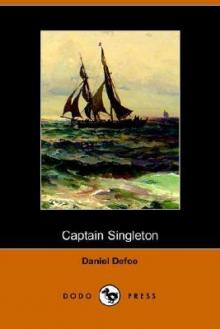 Captain Singleton
Captain Singleton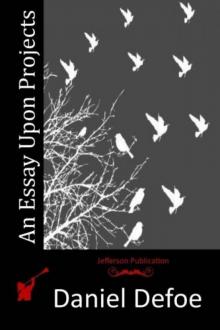 An Essay Upon Projects
An Essay Upon Projects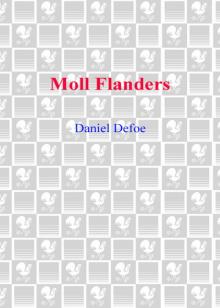 Moll Flanders Moll Flanders Moll Flanders
Moll Flanders Moll Flanders Moll Flanders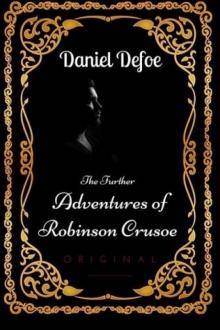 The Further Adventures of Robinson Crusoe
The Further Adventures of Robinson Crusoe Everybody's Business Is Nobody's Business
Everybody's Business Is Nobody's Business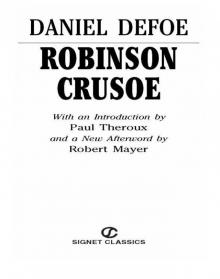 Robinson Crusoe
Robinson Crusoe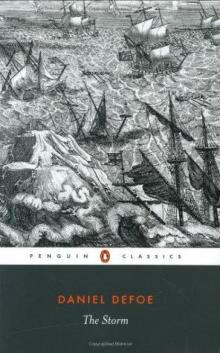 The Storm
The Storm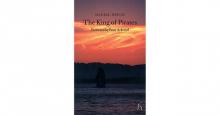 The King of Pirates
The King of Pirates History of the Plague in London
History of the Plague in London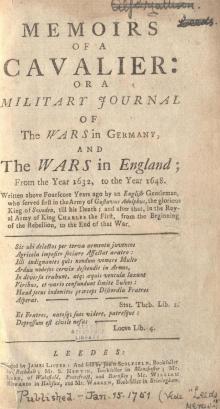 Memoirs of a Cavalier
Memoirs of a Cavalier_preview.jpg) The Life and Most Surprising Adventures of Robinson Crusoe, of York, Mariner (1801)
The Life and Most Surprising Adventures of Robinson Crusoe, of York, Mariner (1801) A Journal of the Plague Year
A Journal of the Plague Year_preview.jpg) The Life and Adventures of Robinson Crusoe (1808)
The Life and Adventures of Robinson Crusoe (1808)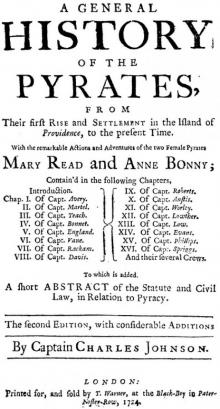 A General History of the Pyrates: / from their first rise and settlement in the island of Providence, to the present time
A General History of the Pyrates: / from their first rise and settlement in the island of Providence, to the present time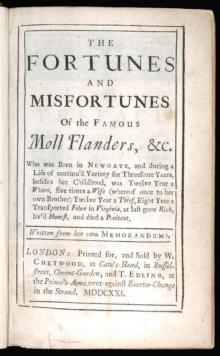 The Fortunes and Misfortunes of the Famous Moll Flanders
The Fortunes and Misfortunes of the Famous Moll Flanders_preview.jpg) The Fortunate Mistress (Parts 1 and 2)
The Fortunate Mistress (Parts 1 and 2)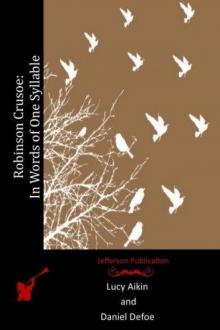 Robinson Crusoe — in Words of One Syllable
Robinson Crusoe — in Words of One Syllable From London to Land's End
From London to Land's End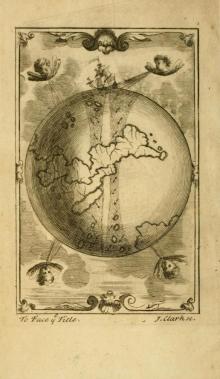 A New Voyage Round the World by a Course Never Sailed Before
A New Voyage Round the World by a Course Never Sailed Before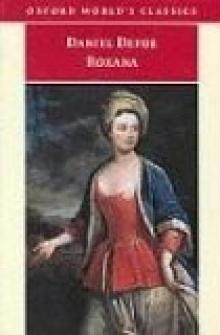 Roxana
Roxana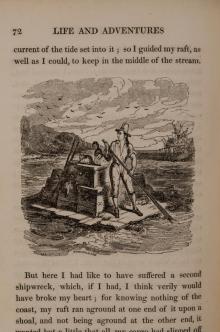 The Life and Adventures of Robinson Crusoe of York, Mariner, Volume 1
The Life and Adventures of Robinson Crusoe of York, Mariner, Volume 1_preview.jpg) Memoirs of Major Alexander Ramkins (1718)
Memoirs of Major Alexander Ramkins (1718) Dickory Cronke
Dickory Cronke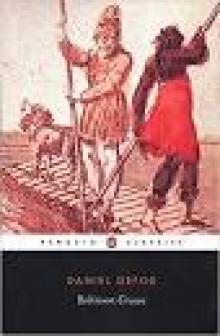 Robinson Crusoe (Penguin ed.)
Robinson Crusoe (Penguin ed.)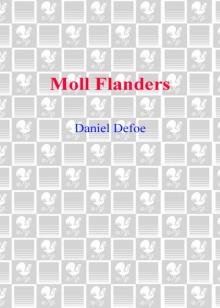 Moll Flanders
Moll Flanders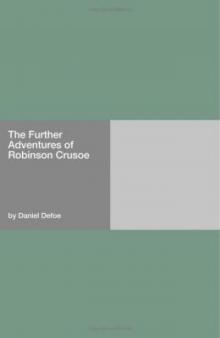 The Further Adventures of Robinson Crusoe rc-2
The Further Adventures of Robinson Crusoe rc-2